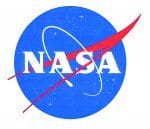Saturn’s moon Enceladus may be habitable: NASA
NASA has announced that Saturn’s sixth-largest moon Enceladus and Jupiter’s fourth-largest moon Europa may be habitable as they have the necessary ingredients required to sustain life. The key ingredients of life are liquid water, a source of energy for metabolism, and chemicals such as carbon, hydrogen, nitrogen, oxygen, phosphorus, and sulphur. Findings were made by NASA with the help of Cassini-Huygens unmanned spacecraft and the Hubble Telescope. Cassini-Huygens unmanned spacecraft was sent in 1997 to study Saturn, its rings, and its moon.
Salient findings
Saturn’s moon Enceladus has a higher possibility of hosting life than Jupiter’s Europa as it has a form of chemical energy on which life forms can feed. Enceladus is a small, icy moon which has an abundance of hydrogen molecules in water plumes. 98% of the gas in the plumes was found to be water and 1% is hydrogen and the remaining is a mixture of molecules of carbon dioxide, methane, and ammonia.
Underwater vents present on Enceladus resemble the vents present on Earth’s ocean floors, where microbes and other sea life congregate. Scientists expect to find the potential for life in those vents as microbes flourish on Earth in hot cracks on the ocean floors, where sunlight cannot penetrate. Microbes are capable of using the process of methanogenesis, in which hydrogen is combined with carbon dioxide dissolved in the water, to obtain energy. This process creates methane as a byproduct, which is a critical ingredient for life
Month: Current Affairs - April, 2017


